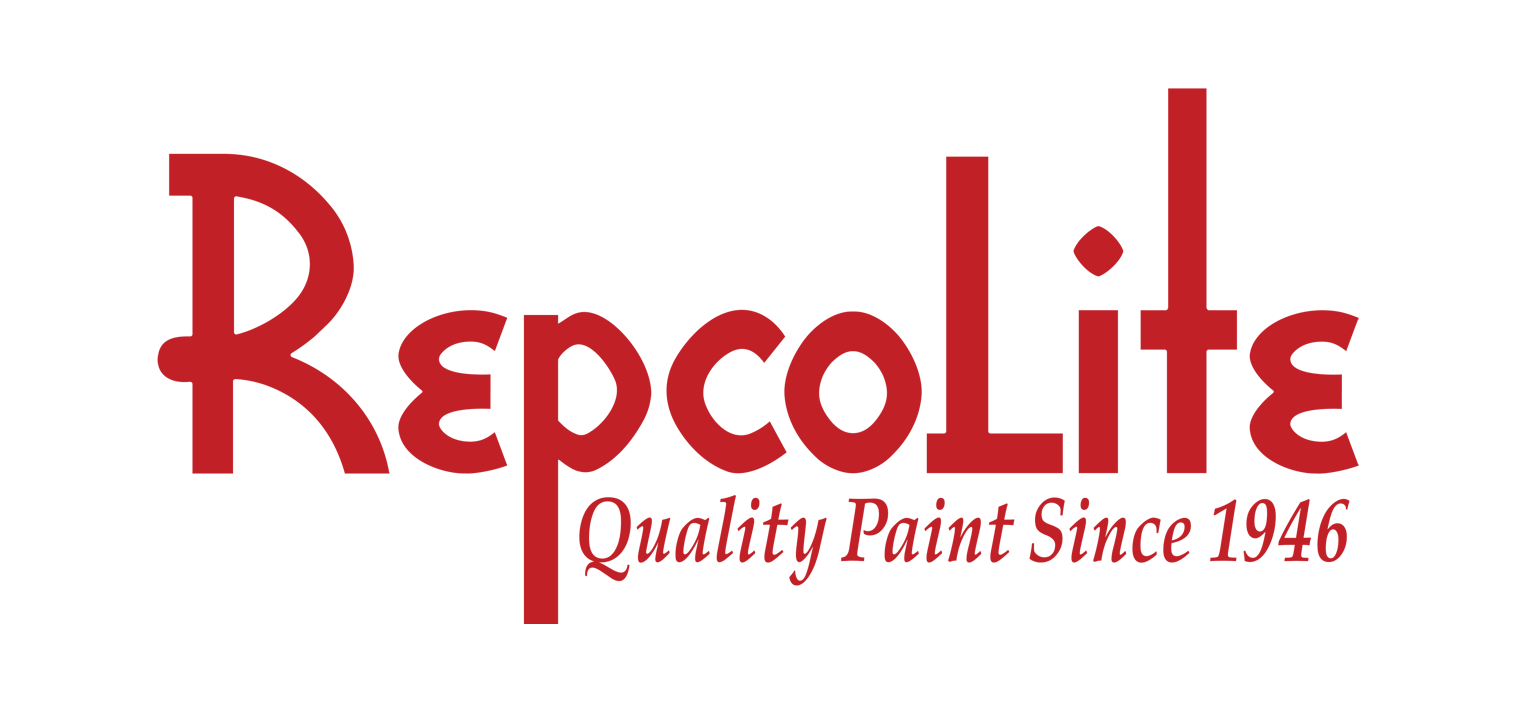Episode 333
Can You Apply Latex Paint over Oil?
On Today's Episode
We're (kind of) back at it after being out sick for 2 weeks! On today's show, we'll talk about:
- Where we've been for the last 2 weeks and why
- Can You Paint Latex Over Oil?
- 5 Questions You Should Ask Before Every Home Decorating Project
Where We've Been . . . and Why! [00:00 - 03:45]
We've been out for a couple of weeks and to help me get a new show together for the week, I'm joined by Dan Altena and Ali Bryde. Both are RepcoLite employees. Dan's the president and has been with the company since 1978. Ali came on board about 1 month ago. I'm glad both could join me so we could get a new show together after a 2 week hiatus.
Can You Paint Latex over Oil? [03:45 - 19:00]
It's a question that comes up periodically. The short answer is "yes," but there are some things to know:
The "Is It Oil or Latex Test"
Sometimes it's difficult to tell if the paint on a given surface is oil or latex. Fortunately, there's a simple test that will get you the answer every time. All you need to do is dampen a rag with ammonia and wipe the surface you're testing. If the paint softens slightly or if some of the color comes off on the rag, then it's latex paint. If there's no change to the paint, then it's oil.
It's Oil . . . But Is it Lead-Based?
If you test the surface and determine that your previous coating is oil-based paint, you can still make the transition to latex. But in order to get great results, you need to do the proper surface preparation. And before we talk about that, we need to quickly mention lead-based paints.
Prior to 1978, lead was used in the production of paint. If the surface you're painting was painted in 1978 or earlier, there's a chance lead could be present. The closer you are to 1978, the less likely you are to find lead. The earlier the surface was painted, the likelihood increases. If you're unsure the surface is lead, you can secure a test kit. And, finally, if you determine that the paint you're dealing with is lead-based, you'll want to take different steps than what I'm going to lay out below. Check this link for more info!
Whew! It's Just Regular Oil-Based Paint . . . Now What?
If you are only dealing with regular oil-based paint, here are the steps to successfully making the shift to latex paint:
- Wash the surface with a good degreaser (Krud Kutter, Challenger, TSP)
- Scuff sand with a 180-220 grit sandpaper
- Wipe all the sanding dust off with a damp rag (NOT a tackcloth)
- Prime with a bonding primer (STIX from Insl-X or QuickSand from RepcoLite)
- Topcoat with your choice of latex paints
Five Questions to Ask Before Starting A Home Decorating Project [19:00 - 39:07]
Making over a space in our home can be a lot of fun. But it can also be daunting! There are a lot of decisions to make, work to accomplish, and (usually) money that needs to be spent. We definitely don't want to make mistakes that cost us time and dollars.
To help you move through your next project with confidence, here are 5 Questions to Ask Yourself Before You Start:
Question 1: How do I want this space to make me feel?
Yes, this is a touchy-feely question. But it's incredibly important. Answering this question helps you make other decisions down the road. So give it some serious thought. What do you want to feel when you enter or spend time in the space you're going to be working in?
Are you looking for a cozy and relaxing vibe for a living room? Are you wanting to feel that "Ahhhhhh, I'm home" feeling when you walk into your entry? Are you hoping to create an energized, exciting atmosphere? Or a space that just makes you feel happy?
Think about the space. Think about what you want to feel in that space--the atmosphere you want to create and make some notes.
Question 2: What purpose do I want/need this space to serve?
Good Interior Design is more than just creating an aesthetically pleasing environment built around great colors, art, and beautiful furniture. The other necessary component--the other side of the design coin--is all about functionality. Good design means a space also functions well for the people living in it.
So what are those needs? What does this space need to do for you? Is it a place where you want to be able to relax and read--a reading nook away from the busy-ness of family life? Or do you need your space to allow for large gatherings and easy conversation? Maybe your space is all about storage--no matter what happens, you need a place for boots and shoes and coats!
Make notes and consider dividing up your needs/wants into two categories: the must-haves and the wishlist items.
Question 3: What's working and what isn't?
If you're not starting over with a blank slate, it's important to take a moment and assess what existing components or features of the space are working towards helping you meet your goals. What features help you achieve the atmosphere and meet the needs you have for the space? And also, determine which features are possibly working against your broader goals.
Question 4: What truly appeals to you?
This question is all about starting to narrow down your colors and the other elements you'll bring into the design. So ask yourself what colors you truly love, what wallpaper styles or patterns speak to you. Consider furniture styles, art, fabrics, accessories, and so on.
This sounds fun and very easy at first. But there's a catch: trends can trick us! We can see a trending paint color that's new to us and, in many cases, we're drawn to it. However, as time goes by, we may find that the more we see of that color, the less we like it.
Finding out what you truly like--regardless of trends--is key. And it can be a remarkably simple process. However, it takes some time and diligence to gather the info. Here's a great way to start:
Grab a literal accordion folder or a manilla envelope. Or, if that's not you, create some Pinterest boards, or use other digital solutions. Either way, whenever you find colors, wallpaper, furniture, fabrics, magazine photos, Instagram posts, anything that appeals to you, save it in your folder. Start doing that and continue doing it!
But the biggest part of making this really work is the weeding of the folder. What this means is that you take time every month or so to assess what you've collected. Toss out (or move to a "maybe" section of your folder) all the colors, fabrics, patterns, that you no longer feel "wowed" by.
If you do this regularly, you will end up with a very specific grouping of colors, patterns, furniture styles, and textures that truly speak to you. You may not have a specific blue or green from this folder, but you'll definitely know that you are inclined to love blues and greens. It gives you a great starting point and helps you choose specific paint colors with much more confidence.
Question 5: Do I Need Help?
If our car needed the brakes done, a lot of us would bring that to a mechanic. If we needed our house re-wired, we'd usually hire an electrician. And none of us would feel bad or incompetent when we hired those experts.
Yet, when it comes to interior design or "picking colors for my room", many people believe that's a task that pretty much anyone can do.
Turns out, Interior Design is a skill just like the mechanical or electrical skills other experts possess. And in many situations, when you work with an expert, you will get expert results that far exceed the results we may have come up with by doing it on our own.
Whether you are great at putting together a comprehensive design that will help you achieve the atmosphere and functionality of your space is for each person to decide. However, it's important that you ask and answer that question: Do I need help with this? Will I benefit from bringing in an expert?
If you decide an Interior Designer will help you meet your goals, be aware that there are a lot of options out there! Many designers offer online (discounted) consultations. You can often secure a 1 hour online meeting that will help you get some great info for your project and which will cost you very little.
We also have people at all of our RepcoLite locations who are happy to help you with color in the store!


